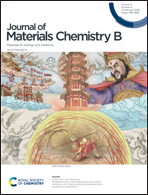Liver fibrosis: pathological features, clinical treatment and application of therapeutic nanoagents
Abstract
Liver fibrosis is a reversible damage-repair response, the pathological features of which mainly include damage to hepatocytes, sinusoid capillarization, hepatic stellate cells activation, excessive accumulation of extracellular matrix and inflammatory response. Although some treatments (including drugs and stem cell therapy) for these pathological features have been shown to be effective, more clinical trials are needed to confirm their effectiveness. In recent years, nanomaterials-based therapies have emerged as an innovative and promising alternative to traditional drugs, being explored for the treatment of liver fibrosis diseases. Natural nanomaterials (including extracellular vesicles) and synthetic nanomaterials (including inorganic nanomaterials and organic nanomaterials) are developed to facilitate drug targeting delivery and combination therapy. In this review, the pathological features of liver fibrosis and the current anti-fibrosis drugs in clinical trials are briefly introduced, followed by a detailed introduction of the therapeutic nanoagents for the precise delivery of anti-fibrosis drugs. Finally, the future development trend in this field is discussed.

- This article is part of the themed collection: Journal of Materials Chemistry B Recent Review Articles


 Please wait while we load your content...
Please wait while we load your content...